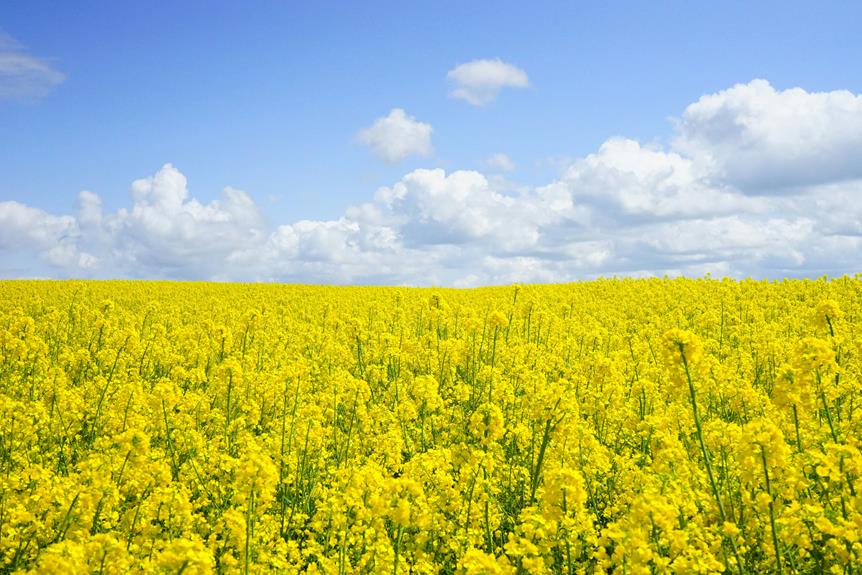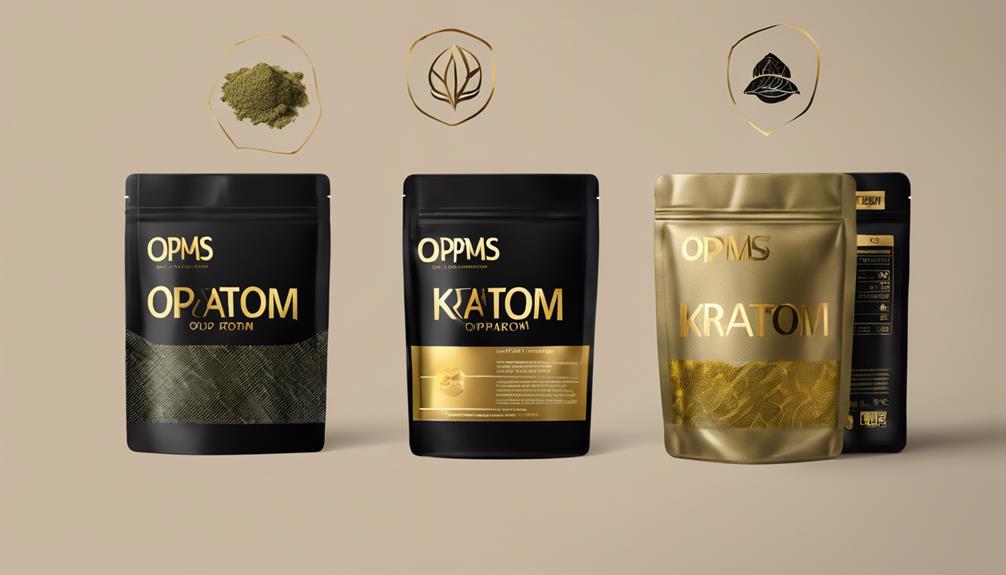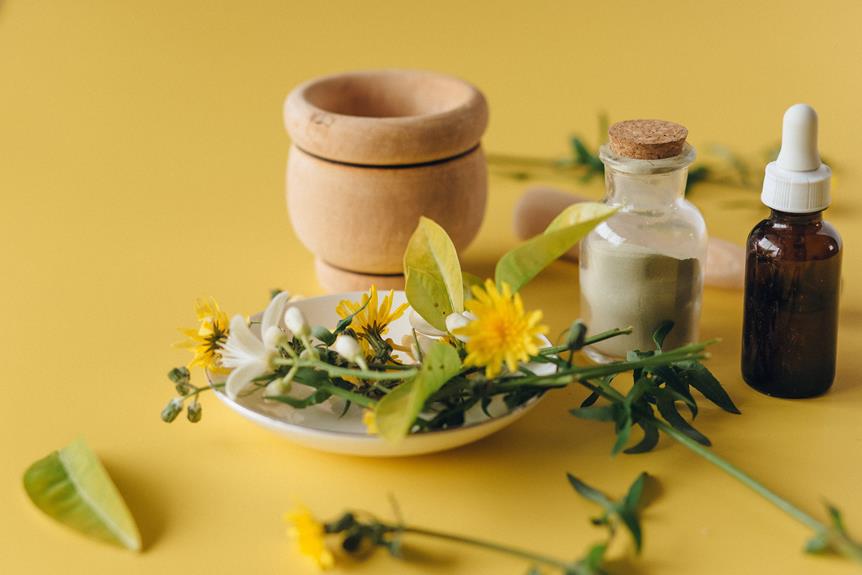Like two mysterious plants growing side by side in the vast garden of natural remedies, Kava and Kratom have captured the curiosity of many. One could say they are like two sides of a coin, each with its own unique properties and potential benefits. But what lies beneath the surface? What secrets do these plants hold? Step into the world of Kava and Kratom, and prepare to uncover a realm of ancient traditions, medicinal possibilities, and cautionary tales that will leave you questioning their true nature.
Origins and History
Kava and Kratom have rich histories rooted in traditional cultures, with Kava originating in Polynesian Island cultures and Kratom being native to Southeast Asia. For thousands of years, Kava has been an integral part of Polynesian cultures, particularly in Fiji and Hawaii. It has been consumed for its relaxing effects and has played a significant role in religious rituals and ceremonies. The consumption of Kava before important events is a longstanding tradition that continues to this day. In Pacific island communities, Kava is commonly consumed at Nakamals, also known as Kava Bars, as a beverage to relax and unwind.
Similarly, Kratom has been a part of Southeast Asian culture for thousands of years. It has been traditionally used for pain relief and mood enhancement. However, it is important to note that Kratom has been outlawed in Thailand for over 70 years and is also prohibited in Malaysia due to concerns about its potential side effects.
Kava and Kratom have distinct differences in their effects on the brain. Kava’s active ingredients, kavalactones, interact with the limbic system and do not pose the risk of addiction. On the other hand, Kratom contains alkaloids that interact with the opioid systems in the brain, similar to opiate drugs, which can lead to addiction, tolerance, and withdrawal syndrome.
In recent years, Kava has gained attention for its potential therapeutic benefits. It has been found to be effective in treating anxiety and has shown promise in fighting cancer cells. As a result, Kava is gaining worldwide acceptance as a natural and safe herbal product.
Health Benefits and Uses
Kratom, a natural plant native to Southeast Asia, has gained recognition for its potential health benefits and various uses. Both kratom and kava, two substances with similarities and differences, offer a range of health benefits and have been utilized for various purposes. Here are some of the health benefits and uses of kratom and kava:
- Relaxation and Stress Relief: Kava has been traditionally used in Polynesian Island cultures for its calming effects and as a stress and anxiety reliever. Similarly, kratom has been shown to have relaxing properties, helping to ease anxiety and promote a sense of calmness.
- Mood Enhancement: Kava is known for its ability to elevate mood and induce relaxation. On the other hand, kratom can provide stimulant-like effects, such as increased energy, alertness, and a body-like euphoria, which can contribute to an enhanced mood.
- Pain Relief and Natural Alternatives: Both kava and kratom have been used as natural alternatives for pain relief. Kratom, in particular, has been traditionally used for pain management, and its active ingredients have shown potential analgesic properties.
These health benefits and uses have contributed to the popularity of kava and kratom, leading to the emergence of kava bars, where individuals can enjoy these substances in various forms, such as teas or capsules. It is important to note that while kava and kratom offer potential health benefits, it is essential to use them responsibly and in moderation.
Potential Side Effects and Risks

As we explore the potential side effects and risks, it is important to be aware of the potential drawbacks associated with the use of both kava and kratom. While kava tea is often praised for its calming effects, regular usage can lead to physical dependence and withdrawal symptoms. These symptoms may include anxiety, tremors, and even seizures. Similarly, kratom, known for its stimulant effects and ability to act as a pain reliever, can also result in physical dependence, similar to opioids. Withdrawal symptoms from kratom may manifest as flu-like symptoms, depression, and nausea.
It is worth noting that heavy users of kava may experience poor health, swollen faces, and scaly rashes. This highlights the importance of moderation and responsible consumption. Additionally, kratom’s short-lived effects can lead to an inclination to take more over time, potentially increasing the risk of dependence and associated withdrawal symptoms.
Both kava and kratom carry potential risks and side effects, and it is crucial to approach their use with caution. Testing and research are necessary to ensure their safety and to understand the full extent of their potential side effects. It is also important to consider individual differences in tolerance, as the effects and risks may vary from person to person.
Legal Status and Controversies
The legal status and controversies surrounding the use of kava and kratom have been the subject of much debate and regulation in various states and municipalities. Here are the key facts you need to know:
- Kratom: The legal status of kratom varies across different states. While some states have banned its use, others have imposed age restrictions for its purchase. The Federal Government briefly initiated a ban on kratom, but it was undone before taking effect. Efforts to ban kratom have also been attempted in certain municipalities. These legal actions have been driven by safety concerns and the need to address the public health crisis associated with its consumption.
- Kava: In contrast to kratom, kava is legal in all 50 states and is not regulated by any law. Kava has been used for centuries by Pacific islanders and is derived from the roots of the *Piper methysticum* plant. It is known for its relaxing and calming effects, making it a popular social beverage. The Thai government also recognizes the cultural and traditional significance of kava, and it remains legal in Thailand.
- Controversies: The controversies surrounding kava and kratom primarily stem from the potential side effects and risks associated with their use. While kava has been deemed safe when consumed in moderate amounts, excessive consumption can lead to adverse effects on the liver. As for kratom, it contains the active compound Mitragynine, which can have opioid-like effects when consumed in large doses. This has raised concerns about its addictive potential and potential for abuse.
Is Payless Kratom Similar to Kava and Kratom, and What are the Differences?
Payless Kratom offers a variety of kratom products and prices, but it’s essential to know the differences between kratom and kava. Kratom comes from the Mitragyna speciosa tree, while kava is derived from the Piper methysticum plant. Both have distinct effects and uses, so it’s important to research before purchasing.
How to Use Kava and Kratom Safely

To ensure the safe and responsible use of kava and kratom, it is important to understand the proper guidelines for their consumption. These guidelines will help you make informed decisions and minimize the potential risks associated with their use.
When using kava, it is recommended to start with a low dosage and gradually increase it as needed. Most users find that consuming 70-250 milligrams of kavalactones, the active compounds in kava, is sufficient to experience its desired effects. Kava can be consumed in various forms, such as powdered root, capsules, or tinctures. One common method is to mix the powdered root with water and strain it to create a kava drink. It is important to note that kava should not be mixed with alcohol or other sedatives, as it can enhance their effects and potentially lead to adverse reactions.
Similarly, when using kratom, it is crucial to start with a low dosage and adjust it gradually. The appropriate dosage can vary depending on factors such as body weight, tolerance, and desired effects. Kratom is commonly consumed by mixing the powdered leaves with water or other liquids. It is essential to carefully measure the dosage and avoid exceeding the recommended amount. Additionally, it is advisable to take regular breaks from kratom use to prevent tolerance and potential dependence.
Understanding the chemical makeup of kava and kratom is also important for safe consumption. Kava contains kavalactones, which act as sedatives and may have psychoactive effects. Kratom, on the other hand, contains mitragynine and 7-hydroxymitragynine, which interact with opioid receptors in the brain. Both kava and kratom can have varying effects on individuals, so it is essential to be aware of their potential side effects and interact with them responsibly.
Frequently Asked Questions
What Can You Not Mix With Kava?
You should be cautious when mixing kava with certain substances. For instance, alcohol and kava can have potential risks and interactions, affecting your cognitive and motor skills. It’s important to understand the potential contraindications between medications and kava, as well as any potential interactions with herbal supplements. If you’re pregnant, you’re advised to consider the safety of kava, as it may have implications for expectant mothers. Additionally, individuals taking mental health medications should be aware of possible interactions and precautions with kava. Lastly, it’s crucial to explore the connection between kava and liver health, as there may be potential risks involved.
What Is Kava and Kratom Used For?
Kava and Kratom are both natural substances that have potential health benefits. They have been used traditionally in different cultures for various purposes. Kava is often consumed for its relaxing effects and to elevate mood, while Kratom can provide stimulant-like effects such as increased energy and alertness. However, it is important to be cautious as both substances can lead to physical dependence and withdrawal symptoms. Additionally, there are potential risks and side effects associated with their use.
How Does Kava Make You Feel?
When you consume kava, it has the potential to make you feel relaxed and calm. It can help alleviate feelings of stress and anxiety, promoting a sense of tranquility. Additionally, kava may enhance social interactions and foster a sense of contentment. Some individuals also report improved sleep quality and a better ability to achieve a restful state. Overall, kava has the potential to enhance your mood and provide a soothing effect on both the mind and body.
Is Kava Kava Illegal?
The legal status of kava varies across different regions and countries. It’s important to note that laws can change, so it’s best to stay informed about the regulations in your area. Kava has a long history of traditional use in various cultures, and it is derived from the root of the kava plant. Some people enjoy kava tea for its potential health benefits, but like any substance, it can have side effects. It’s always a good idea to consult with a healthcare professional before trying any new herbal remedy.










